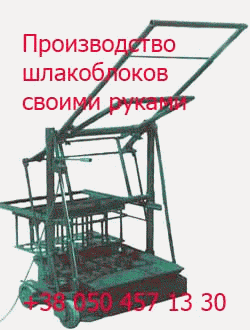Soybean flour will wet and swell in plain water but will not disperse to yield useful adhesive properties. For this purpose, treatment with a soluble alkaline material is necessary. Almost any organic or inorganic alkali will disperse wetted soybean flour to some degree. However, soybean wood glues of maximum bonding efficiency require dispersion with several […]
Архивы рубрики ‘Handbook of Adhesive Technology’
SOYBEAN ADHESIVES
 22 июля, 2015
22 июля, 2015  Malyar
Malyar A. Raw Material Source and Preparation Soybeans are legumes, the seeds of a low-growing field vine. These vines are ancient in culture; the written record of their domestication in China dates back almost 5000 years [15]. From that time until now, soybeans have remained a very important agricultural crop for almost every temperate-climate civilization because […]
Protein Adhesives for Wood
 22 июля, 2015
22 июля, 2015  Malyar
Malyar Alan L. Lambuth ‘ Boise Cascade Corporation, Boise, Idaho, U. S.A. I. INTRODUCTION Human beings have apparently had a propensity for gluing things together since the dawn of recorded history and probably before. By experimentation, we learned over time that certain natural products or extractives could develop bonds in wood of sufficient strength to break […]
Stabilization of EVA Hot-Melt Adhesives
 21 июля, 2015
21 июля, 2015  Malyar
Malyar EVA HMAs are widely used in the packaging and bookbinding marketplace due to their superior adhesion to most substrates, their versatility, and their ease of formulation. EVA — based HMAs degrade under high-temperature processing and application conditions. Degradation usually results in discoloration, viscosity changes, and skin formation. EVA HMAs can be effectively stabilized against discoloration […]
Stabilization of Adhesive Formulations
 21 июля, 2015
21 июля, 2015  Malyar
Malyar In addition to stabilization of the raw materials, increased performance of an adhesive can also be achieved by the addition of antioxidants to the completed formulation. Typically the antioxidant is added during the compounding stages of an adhesive. 1. Stabilization of SIS Hot-Melt Adhesives SIS-based HMAs degrade under high-temperature compounding and application conditions. Degradation of […]
Influence of Stabilized Raw Materials on Adhesive Properties During Production and Storage
 21 июля, 2015
21 июля, 2015  Malyar
Malyar It has been demonstrated that the hydrocarbon-based raw materials of an adhesive formulation do undergo thermooxidative degradation and that the addition of antioxidants is necessary to maintain the integrity of these components during storage and compounding. In this section we illustrate the effects of using unstabilized raw materials in adhesive formulations in comparison with stabilized […]
Stabilization of Waxes
 21 июля, 2015
21 июля, 2015  Malyar
Malyar Waxes are used primarily in HMA formulations. Waxes are generally highly crystalline hydrocarbons. Waxes are added to HMA formulations to lower cost and decrease viscosity. Some of the HMA properties that are affected by wax content are the softening point and open time. Typically, waxes are thermally stable. During high-temperature storage and compounding, however, waxes […]
Stabilization of C5-Hydrocarbon Tackifier
 21 июля, 2015
21 июля, 2015  Malyar
Malyar As shown in rosin ester-based tackifiers, the addition of AO-2 can greatly reduce the hydroperoxide formation of aC5-hydrocarbon based tackifier during static oven aging at 40°C (104°F) (Fig. 13). 1. Effects of Tackifier Stability on the Physical Properties of a HMA The prolonged effects due to thermal oxidation of a tackifier during storage correlate directly […]
Stabilization of Rosin Ester Tackifier Resins
 20 июля, 2015
20 июля, 2015  Malyar
Malyar In static oven aging at 40°C (104°F) of a rosin ester tackifier (Fig. 10) the rate of hydroperoxide formation was reduced significantly using AO-2, with even better results using AO-3. The hydroperoxides are fairly stable at room temperature. At temperatures associated with hot-melt compounding or drying of solvent — and water-based formulations, hydroperoxides decompose spontaneously. […]
Stabilization of Tackifier Resins
 20 июля, 2015
20 июля, 2015  Malyar
Malyar The adhesion or performance of nonpolar elastomers to various substrates can be increased by the addition of a tackifier resin. The tackifier modifies the elastomer by improving wettability, modifying the viscoelastic properties, and increasing polarity. Tackifier resins are susceptible to thermooxidative degradation. It is not uncommon for tackifier resins to degrade rapidly at room temperature. […]
 Опубликовано в рубрике
Опубликовано в рубрике 
